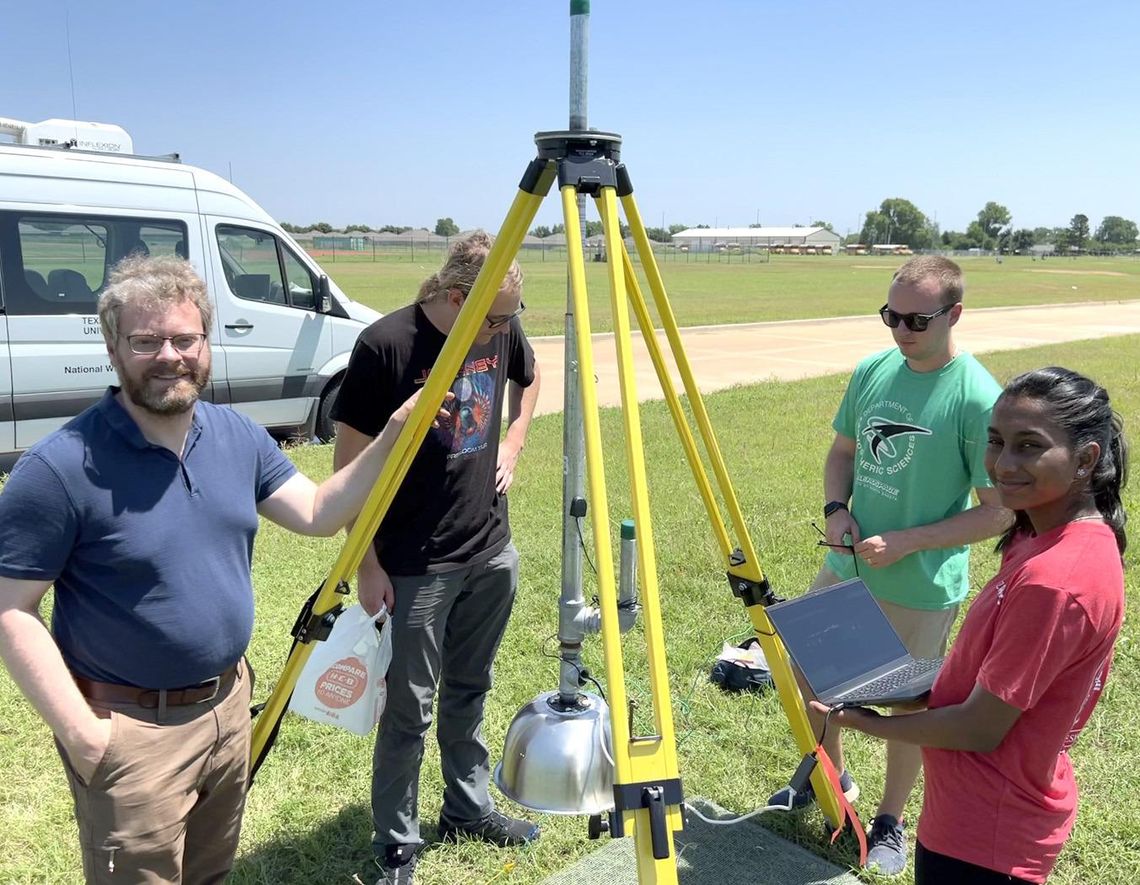Associate Professor Dr. Eric Bruning of Texas Tech University, was in Newcastle Thursday to place a device which measures lightning in an area. Bruner is in the Department of Geosciences Atmospheric Science Group at the Lubbock, Texas university. Pictured, from left, are: Professor Bruner, and undergraduate students Cooper Gray, David Singewald, and Shravani Koli. The students are members of the Bruning’s lightning research group in the Department of Geosciences at Texas Tech.
Dr. Eric Bruning and three undergraduate students from Texas Tech University were in Newcastle last Thursday to place a device which measures the various parts of lightning.
That evening they had “an excellent set of measurements,” according to Bruning, as Newcastle was hit by two different hail corridors.
Dr. Bruning brought along three members of his lightning research group from the Department of Gesciences at Texas Tech: undergraduate students Cooper Gray, David Singewald, and Shravani Koli.
The group is trying to understand the different parts of the lightning discharge as well as comparing different types of lightning detection methods. They placed a device in an area near Newcastle Middle School which measures the stages of lightning development.
Bruning said there’s an invisible part of lightning that steps forward, and it can be seen with a radio sensor.
“Once that develops you get the big surge of electrical current along the channel which makes the bright flash,” Bruning said.
Bruning said there was recently a flash detector launched into space, and the information gathered from it can be compared to the information coming from the device in Newcastle.
“This device tells us how much electricity was moved around by the flash. It lets us communicate with folks at the National Weather Service. And when they see a detection in the national lightning, it lets them know what part of the lightning they are detecting, and makes sure their equipment is working properly,” Bruning said.
Although Bruning teaches atmospheric science and meteorology at Texas Tech, he went to Oklahoma University for his degree in meteorology, a 2003 graduate, and then for his doctorate in 2008.
He said his background gives him some interest in helping the National Weather Service in using their products in their operations.
Bruning added that because of his time spent in the area, he knew that Newcastle was in close proximity to the university, and would be a good area for placing the measuring device.
“The National Weather Service operates a lightning detection system, and this is a good spot for coverage of that system, too,” Bruning said.
Data collection went very well on June 15.
“There were lots and lots of lightning strikes, both sky to ground, and cloud-to-cloud,” Bruning said.
He said they set up to watch in an area near State Highway 9. They also had high-speed video equipment cable of capturing lightning strikes at 10,000 frames per second.
“We had an amazing view of Newcastle from the SH-9 area,” Bruning said. “The equipment worked, and having all that lined up was a great success.”
Bruning said his research group will continue to operate through June, and then they’ll probably be back next Summer. For now, the research continues.
“We’ll go back to the lab and line everything up,” he said, “and see what the lightning looks like using those measurements.”



